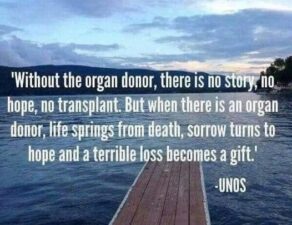
PUBLIC POLICY REPORT, SEPTEMBER 2021
Continuous Distribution
The allocation and distribution system used by UNOS has always been subject to conflicting principles with respect to meeting the requirements of the UNOS Final Rule. This Rule directs UNOS to allocate any organ under its care to the patient who needs it the most, who is the sickest, or who may have been waiting the longest for the life-saving call to receive a transplant.
In the past, there was medical necessity that organs needed to be allocated to someone closest to the donor hospital because time from recovery of the organ needed to be minimized. While that is still an important factor, organ characteristics and transportation improvements have now minimized that one factor as the most important consideration.
Circles were drawn around a donor hospital and then patients were grouped within those circles for medical urgency and other considerations. If there was no one within a circle waiting for that organ, the circle size was increased and the search continued. While much of this process could be automated in the UNOS systems, there was still much interaction between donor hospitals, OPOs, and transplant centers to finalize the decision. This interaction requires time, and time is one of the enemies of successful organ transplantation.
How did UNOS address these issues? In the past several years, UNOS and its various committees have spent much time and published many white papers to improve the allocation and distribution system. The result of this effort, with a great deal of input from the public, medical ethicists, and practitioners in the transplant community, is a concept called continuous distribution.
The idea is quite straightforward. Take all the decisions that are needed to determine the final outcome of an allocation, group these decisions by category, assign weights of importance to these categories, calculate a score for each person on the waiting list, and then come up with a result, a number on a list, where the number indicates the person with the highest score. This person receives the organ at that point in time. The categories can be different for each organ; the weights of each category can be different for each organ. The calculation proceeds based on the organ or organs in the case of a multi-organ transplant. This gives the transplant to the person with the highest, most needy, score, and fulfills the requirements of the UNOS Final Rule. For sure, the travel distance from the donor hospital to the transplant center is still a factor, but it’s not the most important point to start to get an organ to the sickest or most needy person on the waiting list.
UNOS has already started to implement the concept of a continuous distribution system. The first organ to fall under this new process are lungs; soon, kidney and pancreas will follow; then liver and intestine; and finally heart and VCA transplants.
There is much more information on the UNOS website (www.unos.org) about continuous distribution. Here’s that system page offering clear current vs. new system descriptions: https://optn.transplant.hrsa.gov/governance/key-initiatives/continuous-distribution/?j=400174&sfmc_sub=87174721&l=5114_HTML&u=15428421&mid=100001876&jb=7002 There is also a very informative video about this that can be found at the following link: https://unos.org/news/innovation/building-more-flexible-system-for-organ-allocation/ And lastly, UNOS continues to ask for public comment on the continuous distribution proposals and while TRIO as a national organization plans to make comments, individual chapter and individual members are also free to make comments. The following is a link that explains that process and how best to make those comments: https://unos.org/news/community-update-continuous-distribution-policy-development/








